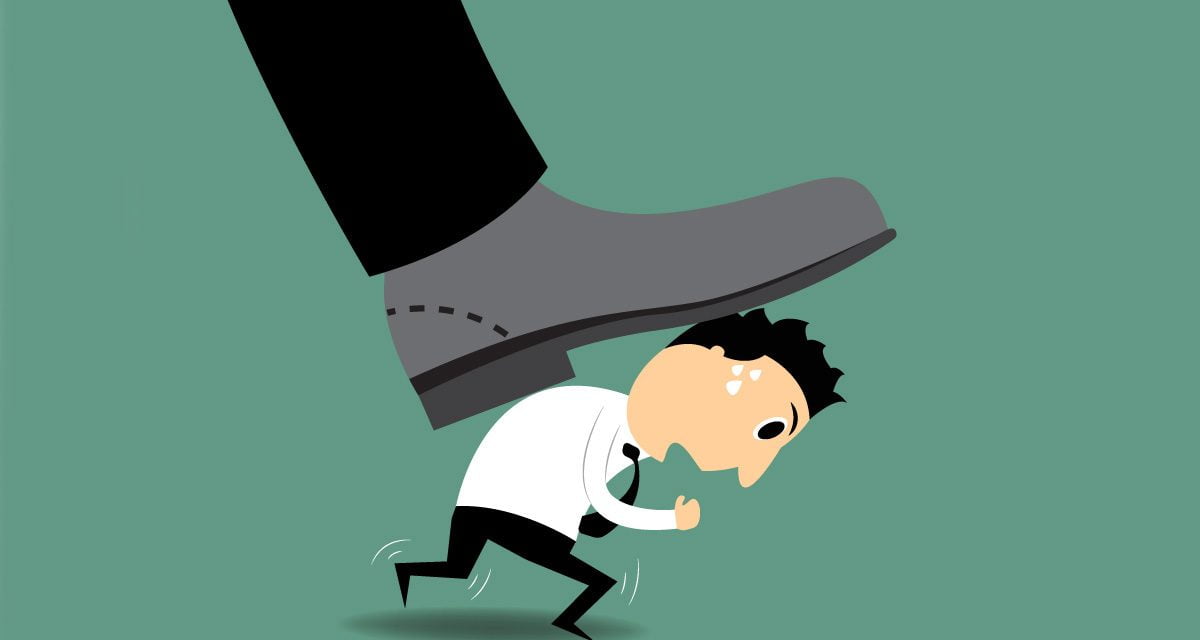On top of this, bullying can lead to dysfunctional workplace relationships, a breakdown within a group who is working for the good of the employer, and significantly increase workers’ compensation premiums.
So, what can an employer do to prevent bullying in the workplace?
One of the first things that an employer needs to do is develop and implement a suitable policy. The policy needs to help employees clearly identify bullying, understand what to do if they need to make a complaint, and set out sanctions that might be used if bullying is found to have occurred.
Employees need to be consulted before, during and after the development of a policy, as consultation about health and safety topics is the cornerstone of effective work health and safety practices.
Implementation of a policy firstly involves training employees by clearly explaining the policy, and what is covered by the policy. All managers and employees need to be aware of the policy and understand its contents.
What else can you do? Well, all managers and supervisors have a responsibility to encourage respectful and courteous behaviour in the workplace. This can be difficult because sometimes a tight-knit group of people will talk to each other in ways that sound appallingly disrespectful to others. But it is important to note that ‘joking’ behaviour can potentially mask someone who is uncomfortable with how they are being treated.
There is a significant proportion of the population who attempt to ‘run along’ with people, not wanting to be the ‘squeaky wheel’ who complains. Or there is the employee that raises an issue, and is told they need to learn how to ‘take a joke’. Sometimes, the first indication of a problem is when a workers’ compensation claim is submitted.
Managers and supervisors need to be encouraged not to wait for someone to complain to deal with problem behaviour.
If a person with some authority in the workplace sees behaviour that they know does not meet the standards set in the workplace, whether it is technically bullying or not, it needs to be addressed at the time.
It is likely that managers and supervisors will need some training in how to broach tricky topics with employees. This may include some front-line skills training.
BUT WHAT IS BULLYING?
Bullying can be direct and obvious, or it can be indirect, and much subtler. The health effects tend to be similar in both instances – both psychological and physical ailments can result. Bullying is usually described as repeated, unreasonable behaviour that is a risk to health and safety.
Direct bullying might include verbal abuse, making derogatory or humiliating remarks to a person, or even physical assault, which could also be criminal behaviour.
Indirect bullying can take a number of different forms, and can be difficult to identify. Excluding an employee from the activities of a group might be bullying, but that doesn’t mean that the cliques that develop in a workplace are necessarily excluding others deliberately. A supervisor changing rosters or hours of work to inconvenience a particular employee or group of employees might be bullying. The same could be said if a regular meeting is deliberately set at a time that is inconvenient for one particular employee.
Another common form of bullying is denying someone access to information they need to do their job, or deliberately withholding vital information from them. Unreasonable deadlines or excessive scrutiny also fall within the scope of bullying.
WHAT ISN’T BULLYING?
Reasonable management action, taken in a reasonable manner, is not bullying.
Managing an employee’s performance is not bullying if it is done in a way that a reasonable person would judge to be fair. The concept of managerial prerogative still exists, and employers are entitled to set reasonable standards for work and manage the performance of employees who fail to meet those standards.
Providing constructive feedback to an employee, telling an employee about inappropriate behaviour or deciding not to promote an employee on reasonable grounds are not bullying. While organisational change can be difficult for employees, it does not follow that restructuring is necessarily unreasonable.
WHAT ARE SOME OF THE FACTORS THAT CAN INCREASE THE RISK OF BULLYING?
Workplaces going through significant change, including restructuring or changes in work methods could be at risk. The same is true of workplaces where negative leadership styles are allowed to develop; neither strict, autocratic styles, nor inadequate or absent supervision, are conducive to harmonious workplace relationships.
If employees lack resources, skills or training to do their jobs properly, then the risk of bullying is higher. When employees are unclear about what they are meant to do, or the way they are meant to behave,
it can lead to problems. Overt interpersonal conflict, or a relationship where employees are regularly criticised negatively, are often signs of a workplace in trouble.
WHAT CAN YOU DO TO ADDRESS THE RISKS?
Ongoing consultation with employees, and thorough training for managers and supervisors can help reduce the risk of bullying. Implementing an appropriate policy, and demonstrating that bullying behaviour won’t be tolerated are also key to creating a harmonious workplace.
Emma Watt is an independent industrial relations consultant with almost 20 years’ experience in the timber industry.
Phone: 0411 708 073 or Email: emma@emmawatt.com.au
Further Reading and Watching
Prevent Bullying and Harassment in Construction Videos from WorkSafeBC
http://www2.worksafebc.com/Publications/Multimedia/Videos.asp?ReportID=37706
The Dangers Of Bullying At Work in Construction and Help Guide on Construction Safety News from Crane Hire Melbourne
http://www.crane-hire-melbourne.com.au/construction-safety-news/










